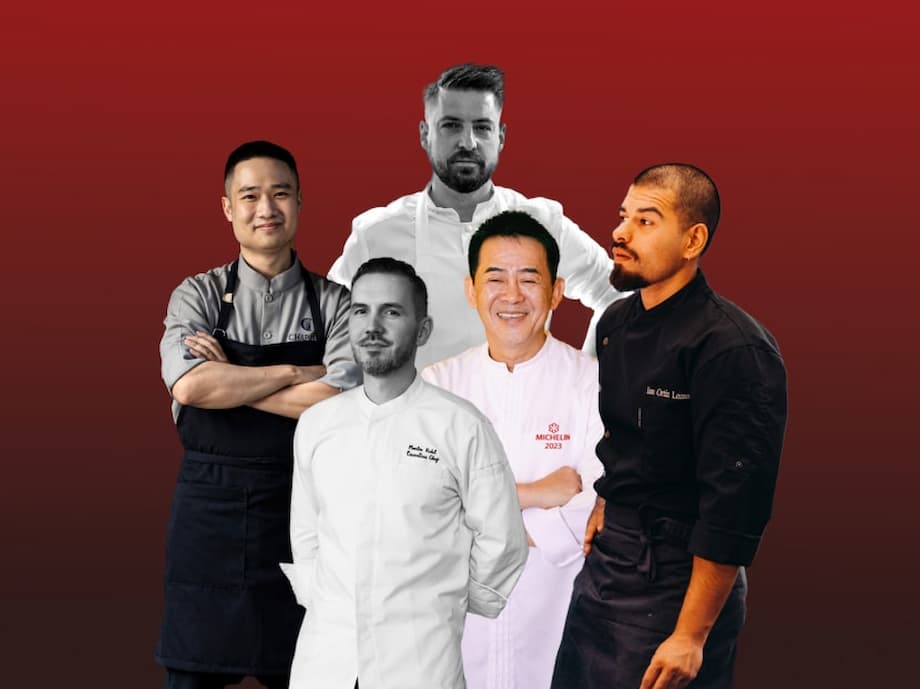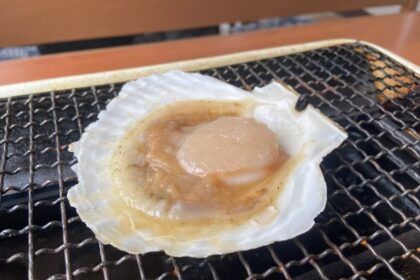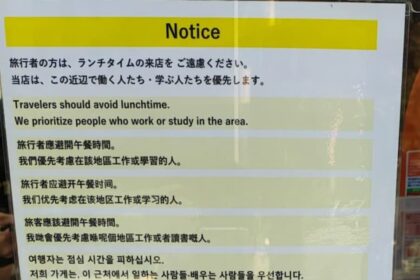Ho Chi Minh City’s Culinary Scene: Where Top Chefs Dine Off Duty
Ho Chi Minh City, still affectionately called Saigon by locals, is a city where food is not just sustenance but a way of life. From bustling street corners to sleek rooftop restaurants, the city’s culinary landscape is as diverse as its history. In recent years, Ho Chi Minh City has emerged as one of Asia’s most dynamic dining capitals, thanks to a new generation of chefs who are redefining Vietnamese cuisine while honoring its deep-rooted traditions. But where do these culinary leaders eat when they’re not behind the stove? We asked some of the city’s most acclaimed chefs to share their favorite spots, revealing a vibrant food culture that blends humble street eats with cutting-edge gastronomy.
- Ho Chi Minh City’s Culinary Scene: Where Top Chefs Dine Off Duty
- Street Food: The Beating Heart of Saigon’s Food Culture
- Fine Dining and the Rise of ‘Cuisine Moi’
- Chefs’ Personal Favorites: From Dive Bars to Rooftop Views
- Vegetarian and Plant-Based Dining: A Growing Trend
- Michelin Stars and International Recognition: Changing the Game
- Preserving Tradition While Embracing Innovation
- In Summary
Street Food: The Beating Heart of Saigon’s Food Culture
For many chefs, the soul of Ho Chi Minh City’s food scene lies in its street food. The city’s narrow alleys and busy boulevards are lined with food carts and open-air eateries, many run by families for generations. Here, locals and visitors alike perch on low plastic stools, hunched over steaming bowls of noodles or crispy banh mi sandwiches. The experience is communal, affordable, and deeply authentic.
Chef Peter Cuong Franklin, founder of the Michelin-starred Anan Saigon, is a vocal champion of Saigon’s street food. When he’s off duty, he heads to Bo Ne Le Hong for sizzling beef steak, Bun Bo Hue (Ton That Dam) for spicy beef noodles, and Tiem Com Chuyen Ky for Cantonese rice bowls. For a dive bar experience, he recommends Birdy, a local favorite with plenty of character.
Chef Ian Ortiz Lozano of Sol Group is another devotee of street food. His go-to spots include Truong Tuyen for grilled pork noodle bowls, Pho Viet Nam for fresh noodle pho, and two iconic banh mi stalls: Banh Mi Xanh and Banh Mi Huynh Hoa. For a classic Vietnamese coffee, he suggests Ca Phe Linh, a timeless coffee shop beloved by locals.
These recommendations echo the sentiments of many food industry insiders. According to The Dot Magazine, chefs and restaurateurs consistently point to dishes like pho, bun bo Hue, banh mi, and com tam (broken rice) as must-try street foods, each with their own favorite vendors scattered across the city’s districts.
As Michael Huynh, a New York-based Vietnamese chef, told The New York Times, “The most authentic food is found at street carts and simple restaurants, as trendy places focus more on style than substance.” He recalls memorable meals of caramelized pork belly, braised catfish, and sticky rice, all enjoyed for less than $20 for two people. The city’s street food scene is not just about affordability—it’s about preserving culinary heritage and community.
Fine Dining and the Rise of ‘Cuisine Moi’
While street food remains central to Saigon’s identity, the city’s fine-dining scene has undergone a dramatic transformation. The arrival of the Michelin Guide in 2023 marked a turning point, signaling to the world that Ho Chi Minh City is now a destination for gourmands. The guide’s latest edition features four Michelin-starred restaurants in the city, including Anan Saigon, Akuna, CieL Dining & Lounge, and Long Trieu, as well as dozens of Bib Gourmand and Michelin Selected venues.
This new wave of restaurants is led by chefs who have trained abroad and returned home to reinterpret Vietnamese flavors through a global lens. The movement, often called ‘cuisine moi’ (new cuisine), is defined by creativity, personal expression, and a celebration of local terroir. Chef Peter Cuong Franklin’s Anan Saigon was the first to champion this approach, earning the city’s first Michelin star for its inventive takes on street food classics—think caviar-topped banh mi and pho reimagined as a fine-dining experience.
Other standout fine-dining destinations include:
- CieL Dining & Lounge: Helmed by Chef Viet Hong, CieL offers a 14-course tasting menu that blends Vietnamese ingredients with French and international techniques. The restaurant’s modern, warm setting and open kitchen create an intimate dining experience. Dishes like abalone rice and sweet potato with black truffle showcase the chef’s artistry and respect for local produce.
- Nephele: Chef Francis Tran’s private fine-dining restaurant is rooted in a philosophy of honoring nature’s rhythm. The 10-course tasting menu features wood-fired techniques and seasonal ingredients, all served in an elegant Indochina Art Nouveau villa.
- Quince: A pioneer of wood-fired cuisine, Quince is beloved for its bold, flame-kissed flavors and casual fine-dining vibe. The open kitchen and natural wine list make it a favorite among chefs and foodies alike.
- Akuna: Located atop Le Méridien Saigon, Akuna is the brainchild of Michelin-awarded Chef Sam Aisbett. The tasting menu marries Vietnamese ingredients with Japanese touches, reflecting the city’s “beautiful chaos.”
- ORYZ Saigon: Chef Chris Fong’s minimalist space offers a menu inspired by East Asian flavors, with a focus on slow-cooked techniques and fermentation.
- Aiii Restaurant: Chef Alain Pham’s artistic approach to modern Vietnamese cuisine results in visually stunning and innovative tasting menus.
These restaurants are not just about luxury—they are about storytelling, sustainability, and pushing the boundaries of what Vietnamese food can be. As Travel and Leisure Asia notes, Saigon’s new generation of chefs are bringing the world to Vietnam and Vietnamese food to the global stage.
Chefs’ Personal Favorites: From Dive Bars to Rooftop Views
Even as they lead some of the city’s most acclaimed kitchens, top chefs in Ho Chi Minh City remain passionate about exploring its diverse food scene. Chef Quang Dung, founder of Tales by Chapter, recommends Lua for French-style bistro fare, Thuy 94 for crab street food, Com Tam Nguyen Van Cu for broken rice with pork chops, and Tan Nha for traditional Vietnamese banquets.
Chef Martin Robl of Park Hyatt Saigon enjoys the modern Vietnamese cuisine at Anan Saigon, the Greek-inspired dishes at Nephele, wine and charcuterie at Mad Wine, and the city views from CieL Dining & Lounge. Chef Kirk Westaway of The Albion highlights Quince for open-flame cooking, Akuna for refined dining, Monkey Gallery for inventive cuisine, and Cuc Gach Quan for nostalgic Vietnamese home cooking. He also emphasizes the importance of classic street food stalls for dishes like pho and com tam.
Chef Logan Hester, formerly of Chôm Chôm and a longtime Saigon resident, urges visitors to explore the city’s alleyways and side streets for culinary discoveries. His top picks include Elgin for Vietnamese ingredients through an international lens, Esta for live-fire cooking and local seafood, and Phở Lệ Le in District 5 for a hearty Southern-style pho.
These chefs’ recommendations highlight the city’s unique blend of tradition and innovation, where a humble bowl of noodles can be as memorable as a multi-course tasting menu.
Vegetarian and Plant-Based Dining: A Growing Trend
While Vietnamese cuisine is often associated with pork, beef, and seafood, Ho Chi Minh City’s vegetarian scene is thriving. Chefs and food writers point to a growing number of plant-based restaurants that offer creative, flavorful menus in tranquil settings.
According to VnExpress International, top vegetarian spots include:
- Du Yen: Michelin Selected 2024, known for its lotus salad and butterfly pea rice paper rolls.
- Be An Vegetarian Cafe: Macrobiotic menu with Vietnamese classics and international dishes, using only vegetables.
- Shamballa Vegetarian: A fusion menu emphasizing balance and plant-based ingredients in a lounge-like setting.
- Hum Dining: Ranked among the world’s top 10 vegetarian restaurants by TripAdvisor, with a menu inspired by Southeast Asian cuisine.
- Chay Garden: Featured in the Michelin Bib Gourmand guide, offering affordable, high-quality vegetarian dishes in a garden setting.
These restaurants cater to a wide range of diners, from families to solo travelers, and reflect the city’s openness to new culinary trends.
Michelin Stars and International Recognition: Changing the Game
The arrival of the Michelin Guide has brought global attention to Ho Chi Minh City’s dining scene. In its latest edition, the guide awarded one Michelin star to Anan Saigon, Akuna, CieL Dining & Lounge, and Long Trieu, while dozens of other restaurants received Bib Gourmand or Michelin Selected status. This recognition has elevated the city’s profile and inspired a new generation of chefs to aim higher.
As the Michelin Guide notes, “Vietnam’s culinary landscape is thriving and raising the bar with every bite. With its fast-growing dining scene and a wave of exciting new openings, Vietnam is quickly becoming a rising star in the world of food and drink.”
International media have also taken notice. Condé Nast Traveler included CieL Dining in its 2025 Hot List of the world’s best new restaurants, praising its blend of local ingredients and global techniques. South China Morning Post highlighted how the Michelin Guide’s arrival signals a “sea change” in Vietnam’s food scene, moving beyond noodles and banh mi to embrace fine dining and innovation.
Preserving Tradition While Embracing Innovation
Despite the rapid evolution of its dining scene, Ho Chi Minh City remains deeply connected to its culinary roots. Many of the city’s top chefs draw inspiration from family recipes, local markets, and the flavors of their childhood. Chef Peter Cuong Franklin, for example, credits his mother’s noodle shop in Dalat as his greatest influence, even as he pushes the boundaries of modern Vietnamese cuisine at Anan Saigon.
At the same time, the city’s new generation of chefs is unafraid to experiment. Restaurants like Monkey Gallery and ORYZ are known for their inventive menus and artistic presentations, while venues like Elgin and Esta incorporate international influences and live-fire cooking techniques. The result is a food culture that is both respectful of tradition and open to the world.
As Chef Logan Hester puts it, “Vietnam offers something for everyone. Explore its alleyways and side streets for culinary discoveries.” Whether you’re seeking a bowl of pho at a humble street stall or a 14-course tasting menu atop a skyscraper, Ho Chi Minh City delivers unforgettable food experiences at every turn.
In Summary
- Ho Chi Minh City’s food scene is a vibrant blend of street food tradition and fine-dining innovation, shaped by a new generation of globally trained chefs.
- Top chefs recommend a mix of humble street stalls (for pho, banh mi, com tam, and bun bo Hue) and acclaimed fine-dining restaurants like Anan Saigon, CieL Dining, Nephele, and Quince.
- The arrival of the Michelin Guide has elevated the city’s profile, with four Michelin-starred restaurants and dozens of Bib Gourmand and Michelin Selected venues.
- Vegetarian and plant-based dining is on the rise, with chef-recommended spots offering creative, flavorful menus in tranquil settings.
- Despite rapid change, the city’s culinary leaders remain deeply connected to local traditions, drawing inspiration from family recipes and local markets.
- Whether you’re a street food enthusiast or a fine-dining aficionado, Ho Chi Minh City offers a world-class food adventure for every palate.












